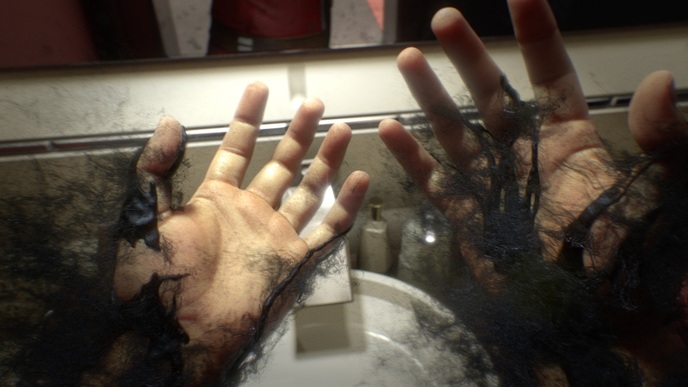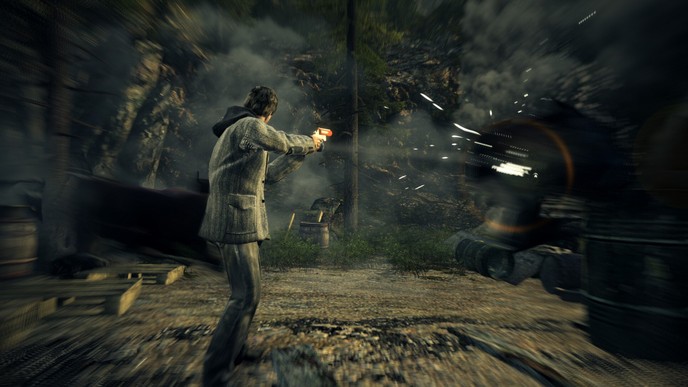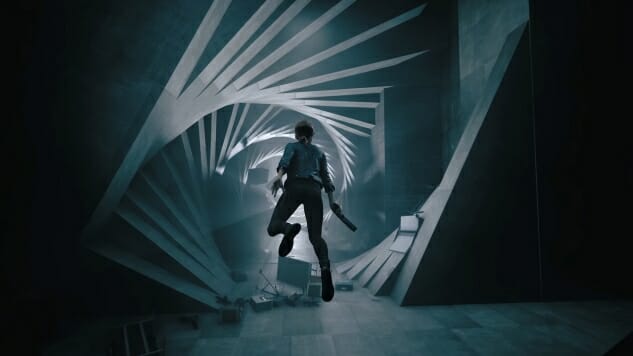
The horror videogame genre has been revitalized in the past decade. Once dominated by Silent Hill, Resident Evil and Fatal Frame, the rise of accessible tools and independent publishing has seen the formation of several niches and subgenres, from retrograde throwbacks to point and click revivals and survival horror standbys. Over the past ten years, some of the best titles were made by small teams or individuals, from the Mod DB community to the library of self-produced titles at Itch.io. If there’s anywhere the case can be made for “too many cooks spoil the broth”, it’s horror games. Some of the most effectively scary games you’ll ever play are touched by the fewest hands.
That said, the big boys of horror design still managed to impress. Remedy Entertainment stood out with some of the best-scripted in the business, and Resident Evil and Silent Hill both held their own. Nostalgia also played a large role in the diversifying horror game scene, drawing from 80s film and vintage visuals to evoke terror on a not-quite-new, but different, level. Meanwhile, we moved beyond the tired scope of haunted houses and asylums and expanded into new environments like spooky suburban neighborhoods, alien-infested spaceships, and secretive government facilities. With so many sources of new ideas and continuing expansion into other categories like dating sims and stealth co-op, horror games have established themselves as one of the most creative genres in games design. Here are our 25 favorites from the past decade.
25. The Blackout Club
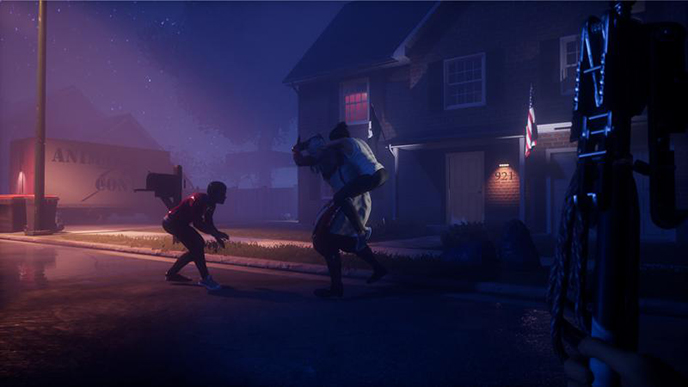
“I play a lot of horror and stealth games in general, and though I expected to see a lot of conventions retread here, I was pleasantly surprised to find an experience that is not immediately easy to adapt to. What aspects are conventional seem to be used sparingly while providing a familiarity that acts as a vital frame of reference for players to anchor onto. It’s a good balance—I’m not completely lost, but I’m not over-confident about my abilities yet, either, and for now, that’s a good place to be. I like creeping around backyards and hopping fences like an alley cat and grappling onto the rooftops. It definitely evokes the giddy, secret thrill of being a kid sneaking out after dark.
It also challenges how boring stealth games can get by adding the unpredictability of other players. It’s one thing to memorize enemy spawns and pathing patterns; it’s quite another to have to adjust for players who might make a mistake or get caught. Since each mission cannot be finished until all players have assembled at the exit station, there’s an additional incentive to look out for each other and go back for anyone who has been left behind (which happens often, due to how easy it is to get caught by the Stalker). The game might not be strictly considered stealth per se, but as someone who prefers to use evasion tactics for as long as possible, I appreciate this added difficulty factor. It’s even better with all the little child-like flourishes (for example, if a teammate tries to “revive” you after a Stalker has put you under mind control, your character runs away and starts to tattle). It reminds me a bit of Sleep Tight, actually. The games are very different genre-wise but both of them turn common childhood fantasies and nightmares into a playable experience, and I love that.” —Holly Green
24. Pamali: Indonesian Folklore Horror
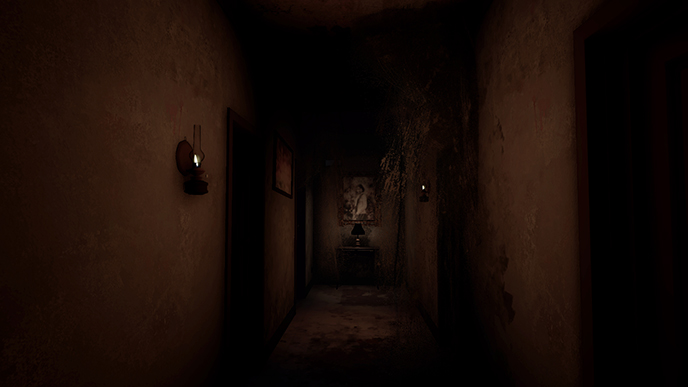
“Pamali: Indonesian Folklore Horror manages to breathe new life into a format that, as much as I love it, has felt stagnant for years. One major problem with point and click games is that the objects in your environment are only as interactive as they are important: either the only items that can be picked up and used are vital to the progress of a mission or puzzle, or they hold no significance outside of what they add to the player’s surroundings. Pamali: Indonesian Folklore Horror is unique in that it follows this well-established precedent, but then destroys it. What happens to Jaka during his [return home] depends entirely on the player; each idle action or interaction is optional. From the moment he crosses the threshold, he can be respectful of his deceased family and their former home, tiptoeing around sentimental and sacred items and ignoring signs of paranormal activity, or mouthy and disruptive, messing with the resident ghost’s belongings, insulting their trauma, removing protective talismans, and generally acting like a jerk. The relationship between experiencing supernatural phenomena and the player’s actions is very direct; the ruder you are, the more active the ghost will be. For that, it is one of my favorite new horror experiences.”—Holly Green
23. Alien Isolation
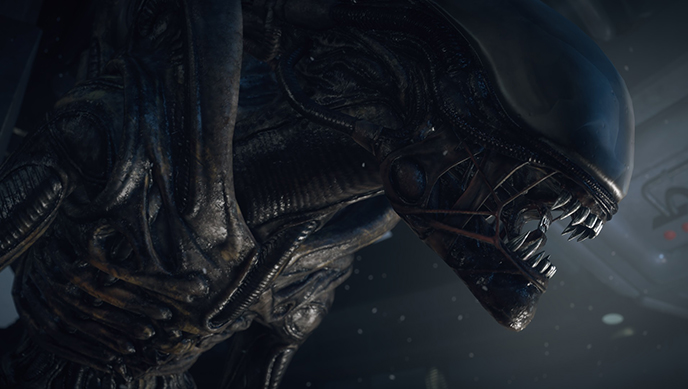
This title didn’t complete enchant our writer Javy Gwaltney back in 2014, but nonetheless, its commitment to the series’ signature sense of disempowerment won him over. “In spite of that slog, I’ll probably remember the good times I had with Isolation more than the bad. I’ll remember crawling through the vent with a lit flare, praying the monster wasn’t behind me. I’ll remember stepping over a corpse, my eyes glued to the dots on my motion tracker, ears listening to the walls. I’ll remember hiding in a locker, peering out at the monster as drool falls from its mouths and I wait for my chance to run. It’s also really hard for me to be too disappointed with a AAA game that’s actively opposed to being just another power fantasy game starring a man who shoots people for his country or himself. Isolation tries to do a lot of interesting things and is for the most part successful.”
22.Concluse
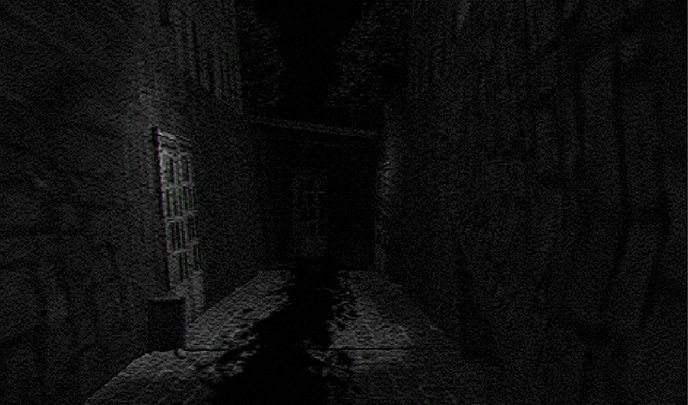
“Like Paratopic, Concluse proves that while game design is often obsessed with “pushing the envelope” mechanically and visually, abandoning certain styles and techniques the minute the technology allows us, that doesn’t mean those methods are no longer useful, or that the games they’re used in are any less valuable. Rather, they can be repurposed and used perhaps even more effectively than they were before. Everything old is new again, and in the case of Concluse, that is a very good thing.”—Holly Green
21.Paratopic
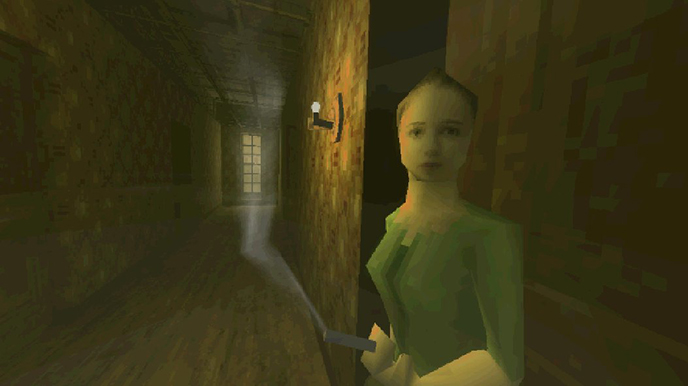
“Paratopic takes place from three different perspectives in a surreal dystopia where media is contraband and rumors suggest the government is selling electricity to aliens. It sounds bizarre, and it is; in fact, singling out any detail from the game feels dishonest, as it can only really be understood or enjoyed in context. The game first caught attention months ago for its visuals, which quickly built up hype as being distinctly unsettling. Its dated polygons are tinged with a distorted color loss that makes it feel like a well worn VHS tape losing key data with every viewing. Combined with the way it rapidly switches between tangentially connected (but equally indecipherable) plotlines, and those long drives along a darkened highway peering five feet into the night, the game feels almost Lynchian. Which I suspect is the best endorsement I could ever give anything.”—Holly Green
20.Faith
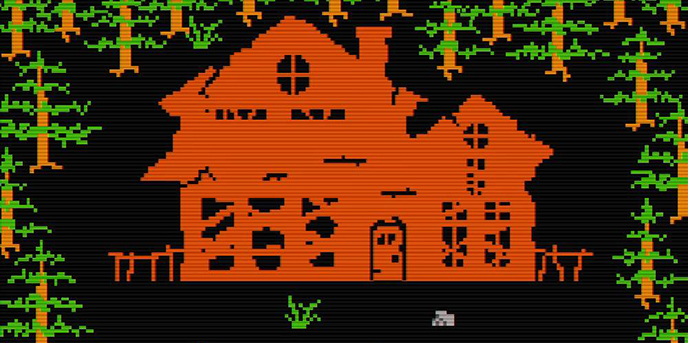
“A major highlight of Faith is its remarkable use of negative space to create a foreboding atmosphere, making its old school computer game minimalism a smart artistic choice rather than one borne of necessity. In it, you play a young priest who returns to the scene of a ritual gone wrong to find out what has become of a fellow clergyman. Those of you who lived through the 80s will find the game’s dark themes of Catholicism, possession, and occultism familiar—and still every bit as temptingly scary as they were all those years ago. Play this if you really enjoyed The Exorcism and Poltergeist (and be sure to stick around for all five endings).” —Holly Green
19. Doki Doki Literature Club

“Doki Doki Literature Club is very self aware. As a dating sim, it almost has to be. Generally, the characters in a game of this genre, not unlike a harem anime, are assembled for a shared purpose: to possibly date you, the player. It requires your interest, but also your participation, both cultivated and groomed through the direct dialogue and ensuing conversation with your potential, and virtual, paramours. But more than that, Doki Doki Literature Club violates the silent contract of dating sims, and almost all games everywhere: it acknowledges the nature of its existence. It’s dark, at times bleak, and dabbles in the surreal. Its premise is poised heavily on letting the player know they, the fictional girls of the titular literature club, are wise to your presence. In fact, they know their very being relies upon it. At any time you could stop playing, or even erase their character file altogether. But please don’t. They love you.“—Holly Green
18. Knock-Knock

Knock-Knock is one of those rare games that is completely unafraid to alienate the player with its weirdness. Its logic makes very little sense, it doesn’t state outright what the game is about or how to play it, and it has the surreal tone of a waking dream. How fitting, then, that Knock-Knock is something of a comment on chronic nightmares. As Carli Velocci wrote in 2013, “Knock-Knock goes beyond a simple horror game in this sense. Depicting the insanity and hallucinations that befall people with little sleep makes the player feel a little unstable. Whether or not you become frustrated with how the game is played is overshadowed by the fact that you’re probably supposed to feel wary of the events going on in the game. The repetitiveness then becomes the sad tale of insanity in the traditional sense—doing the same thing over and over again and expecting different results.”
17. The Evil Within

“The Evil Within may be rough around the edges in presentation and execution, yet it is rich in not just recreations of great horror moments from years past, but also in the introduction of new, memorable ones of its own. Traditional survival horror games aren’t likely to spring back into relevance on the back of what The Evil Within accomplishes. But its ultimate impression—that of a savvy Greatest Hits-styled overview of the genre—may inspire new ways of thinking about what it is exactly we loved about horror games in the past.”—Reid McCarter
16. Pathologic 2
“Pathologic 2 is a deeply weird game, with a Mayakovskian cast of characters, plopped into an apocalyptic Bertolt Brecht play set deep in the Russian Steppe. And while the actual gameplay maybe disappointing or frustrating to some (it was to me), I can’t help but be compelled by a game so enthusiastically bizarre.”—Dia Lacina
15. Resident Evil 7
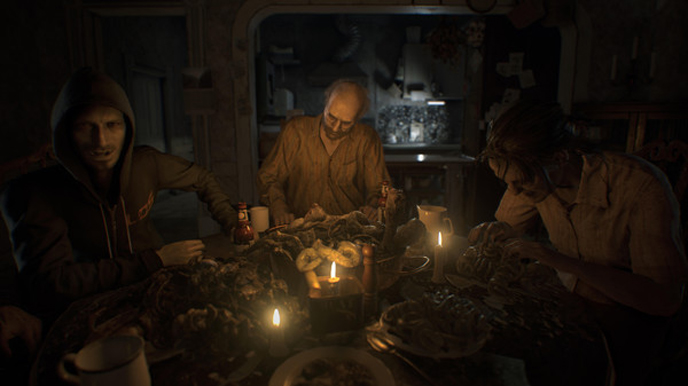
“Resident Evil 7 is so anxiety-inducing, I had to get someone to come play it with me. And I’m glad I did, because the game is probably best experienced in pairs. Its story is told in fits and starts, providing several opportunities to theorize about what is actually going on. Being a first-person horror game, there’s a lot of time spent avoiding enemies and slowly creeping down hallways, and we spent a lot of that time between story beats hollering about what the game’s story was even about at that point in time.”—Cameron Kunzelman
14. Prey
Some may not feel that Prey, which is more of a thriller, actually qualifies as a horror game—our writer Cameron Kunzelman didn’t when he played it in 2017. Nonetheless, its rich atmospheric tension is enhanced by its deception and creates a spine-tingling sense of paranoia: “The opening few minutes of the game are quickly revealed to be a lie (well, some of it), and over the course of the hour that I played I had the distinct feeling that many people and entities that I was going to meet over the course of the full game would be either lying to me or giving me half of the information that I needed so that they could manipulate me. Moreover, the theme of deception is embedded in the bones of the game, as the sole enemies that I fought over the course of the demo were “mimics” who would attack me, jump past, and then “hide” as objects in the game. The player turns around and they have to do some quick thinking: Was that phone there before? What about that box? Any of them could be a mimic now, and danger is in every situation. It’s a paranoid existence for the immersive sim player, which is really just a set of mechanics that means you’re going to spend a lot of time rummaging around and picking things up to solve your way through the game.”
13. Hellblade: Senua’s Sacrifice

“When I think about the gameplay of Hellblade: Senua’s Sacrifice, how Senua comes to work with, and not against, her intrusive thoughts and distorted perceptions, the words self-acceptance come to mind. While some may see it as a horror game, I also like to think of it as a love story, one that explores the power of finding someone who does not have to fully understand you in order to know who you are. Notable for its sharply intimate knowledge of Celtic and Norse traditions, its simple but satisfying combat and its innovative depiction of psychosis, it is impressive how the game manages to marry these three aspects and still deliver a well-scripted action game that achieves a balance between its puzzle elements, cut scenes, and action sequences. Despite the despair in Senua’s story, her father’s abuse, the alienation of her village and her doomed fight to bring her lover back from the dead, Hellblade: Senua’s Sacrifice is hopeful. It suggests there is still a meaningful life to be lived even if your perception of the world is so dramatically different from other people. And I find that encouraging and beautiful.”—Holly Green
12. Detention

“In establishing this explanation for Fang’s actions, Detention is deeply humanizing, acknowledging the naivete that personifies pre-adulthood, and even in tragedy, framing it with some modicum of compassion. I feel for her. I remember what it was like to be a teenage girl in an unhappy home, to feel so unloved and desperate for affection that you’ll take whatever you get. When someone takes that away from you, and when you realize the person who was supposed to protect you took advantage, it’s soul-shattering. There are no winners in Detention, only villains and victims, with some overlap in between.”—Holly Green
11. Stories Untold
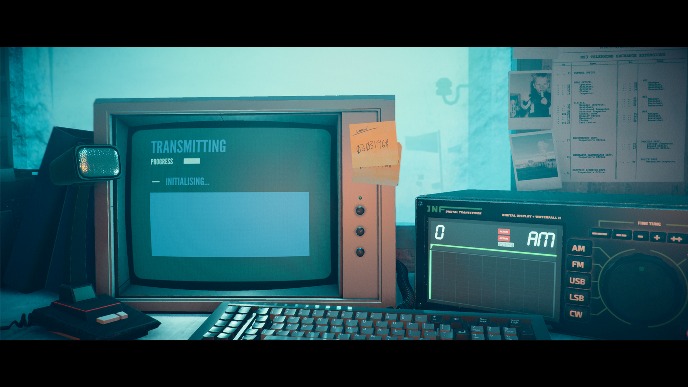
“Stories Untold is like the perfect snack: small, delicious, and immensely satisfying. Heavily inspired by 80s text adventures, it combines puzzle and point and click elements over four short chapters. While the “big reveal” at the end dips slightly into some comfortable and well-worn tropes, the writing features repeating elements woven through each episode that, in their bizarreness, beautifully heighten the suspense before reaching the game’s end. Go in blind, and play it in a single session for the best experience.”—Holly Green
10. Until Dawn

“You know that moment you grab hold of a friend’s hand as the serial killer’s about to round a corner? Or the sound of a packed movie theatre, a chorus of whimpers and gasps, reacting to the homicidal maniac as they drive their giant kitchen knife into the victim’s belly over and over again? The grotesque sensationalism of the horror movie experience engages the audience, but it’s also the driving force propelling the audience to engage with one another. That’s also what Until Dawn does. The horror movie experience invites the viewer to engage even though the character on-screen won’t respond. Have you ever shouted instructions or words of caution at a clueless teenager traipsing about the screen? Have you ever thrown your hands up in frustration and vented to someone about how that same teenager, now chopped into a billion little pieces, perished because they failed to listen to your sagely advice? When a horror movie character refuses to acknowledge the viewer and makes one poor decision after the next, it’s nice to have someone to complain to. Horror movies are more interactive than almost any other kind of film, and Until Dawn understands why.”—Ashley Barry
9.SOMA
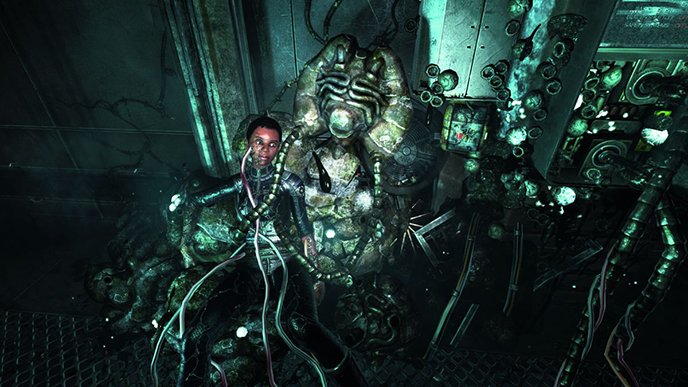
“When it originally came out, response to SOMA was a bit divided. The damp underwater research facility where it was set was spooky, to be sure, but the few enemies it contained, not so much. Many felt the game was best enjoyed as a solitary experience. Years later, SOMA sticks with me not because of the few scary monsters it has tucked away in forbidden corners, but because of the lies it sold me. I played the game assuming that my objective was clear and a goal would be reached, that my character would find redemption and happiness. Instead, it ended in the damning solitude of knowing my character would be alone and in the dark for eternity, a mere copy of him transported to a paradise he will never see or feel. That single moment of combined terror, joy and disappointment hit in a way that I have yet to shake.”—Holly Green
8. Control

Remedy has worked hard to unite the mysterious and the mundane since at least Alan Wake, and Control is an almost ideal distillation of that theme. At its heart is the bureaucratic exploration of the unknown and unknowable, with the player stepping into the role of the new director of a government organization devoted to classifying and controlling unexplained phenomena. It’s an enigmatic and unpredictable quest not just into a nondescript office building that grows increasingly contorted and abstract, but into the heart of a conspiracy that spans the paranormal and the prosaic, and one that ultimately seems to have little use or concern for either the player or their character. In its depiction of humanity grasping for relevance and understanding in an indifferent and impossible to understand universe we see a clear reflection of our own existence. It’s a game of uncommon wisdom and depth, and one that needs to be played.—Garrett Martin
7. Amnesia: The Dark Descent
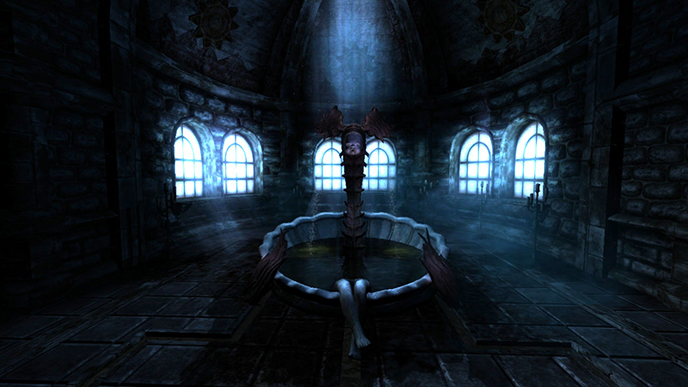
As Kirk Hamilton wrote for us all the way back in 2010, “…Taken as a whole, I can only call Amnesia: The Dark Descent a success. Designers Thomas Grip, Jens Nilsson and their team at Frictional have identified the nature of fear and recreated it with a surgical precision, and their moment-to-moment execution is peerless. By enforcing player-powerlessness to a degree that most other horror games do not, Amnesia: The Dark Descent imparts an experience that is as deeply terrifying as it is satisfyingly original. You’re going to die. Do try to enjoy yourself.”
6. Alan Wake
“Remedy’s inspired homage to Twin Peaks and The Twilight Zone gets the pacing and presentation of a TV show just right. Its core metafictional concept (writer Alan Wake wars with his own inner darkness in a world created by his words) is bolstered by fantastic atmosphere, memorable secondary characters and the cliffhanger twists of a great TV mystery.”—Garrett Martin
5. Bloodborne
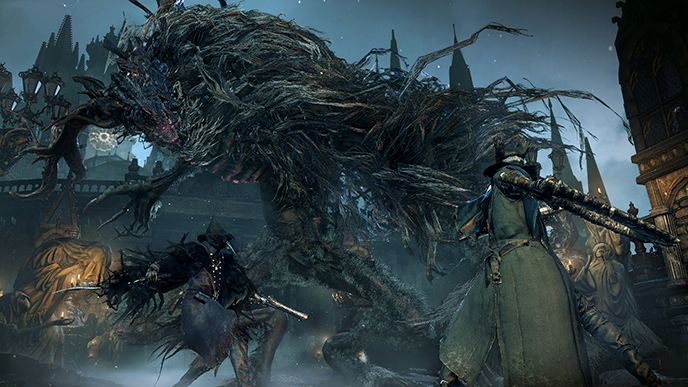
“Bloodborne is a distillation of everything that worked in Demon’s Souls and Dark Souls. The combat is fast, less clunky and more risky. Yharnam is a stunning world worthy of hours of exploration, and, perhaps most pleasant of all, Bloodborne is a game that knows when to end. It’s a deeply challenging game set in a fantastically realized gothic nightmare, an adventure of the highest quality for those willing to undergo the game’s trial by fire.”—Javy Gwaltney
4. Deadly Premonition

“Few games proved as polarizing or perplexing as this action-horror title, essentially a mash note to Twin Peaks’ first season with Z-grade production values, deservedly sold with the bargain-bin price of $20. Alternately goofy and creepy, Deadly Premonition milks a lot of its scares from crappy animations, awkward dialog trees, and enemies that can only scream, “I don’t want to diiie!” Ultimately, its absolute clunkiness scored major points for being endearingly contrarian in an era obsessed with ultra-realistic graphics and sequels. In other words: it was experimental without being all arty about it.”—David Wolinsky
3. Bioshock 2
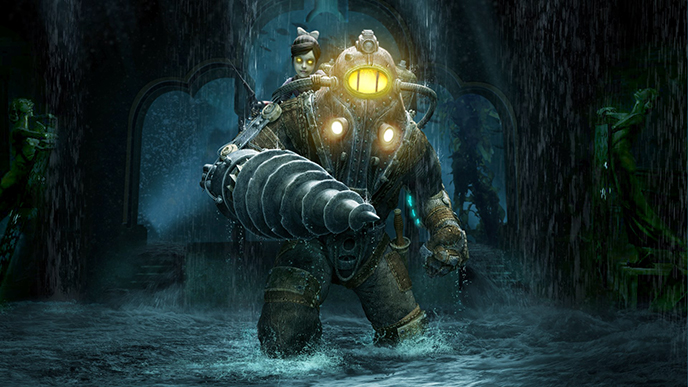
“With a well-paced, multifaceted story about father and daughter, BioShock 2 offers more real player choices, and succeeds at being thought-provoking instead of simply wearing brainy trappings. It’s truly impressive that a game casting players as such a powerful character succeeds so often at making them feel helpless or humbled—like during a particularly indelible scene where part of Rapture’s bounds are overcome by rushing water and darkness. No game can be the unforgettable revelation the original BioShock was, but the sequel proves that lawless, mad-wild Rapture is more than a perfect setting for a brilliantly polished action videogame. It’s a framework for narrative and philosophical exploration that we can hopefully return to yet again in future installments.”—Leigh Alexander
2. Dead Space 2
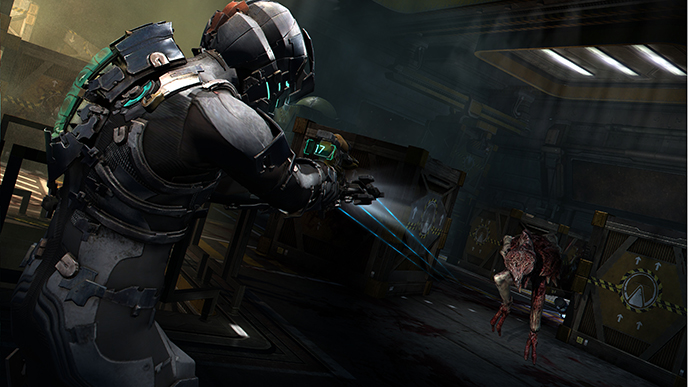
“Dead Space 2’s developers touted the game’s “strategic dismemberment,” which is marketing speak for “shooting these alien creeps’ arms off.” That adds greatly to the game’s extreme gore, which is miles beyond just about any slasher flick, if only because videogames drag on way longer than movies. Yes, it makes no sense that you can get extra ammo by curb-stomping a space zombie’s head, but hey, at least it cakes everything with just a little bit more goo and blood. (Space blood?) Dead Space 2 is a tense, claustrophobic thriller that absolutely goes for it whenever the monsters shows up, and that makes it pretty damn horrific if you ask me.”—Garrett Martin
1. P.T.

“Hideo Kojima’s “playable teaser” for a game that will never exist is a cryptic, frightening bite-sized gaming blurt whose legend will loom large for as long as it remains unplayable. Yes, when Konami and Kojima’s relationship collapsed, the publisher delisted the game, meaning only devices that already had it installed before that happened can currently play it. (Okay, this is the 21st century, so maybe there’s some way to illegally rig it up on a PC or something right now. Feel free to google that, I guess.) I generally have no time for so-called “scary” games—notice which one of Paste’s games editors is putting this particular list together—but P.T.’s minimalism, repetition and creepy aesthetic totally makes me uncomfortable whenever I play it. I don’t even regret that the game this was advertising, Silent Hills (which Kojima was making alongside filmmaker Guillermo del Toro), got nuked by Konami—in its brevity and single-minded focus P.T. is like the scariest ghost story you’ve ever heard, only you’re experiencing it first-hand. It is a thing of small beauty in and of itself, and I don’t see how Silent Hills could’ve matched its singular power.”—Garrett Martin

